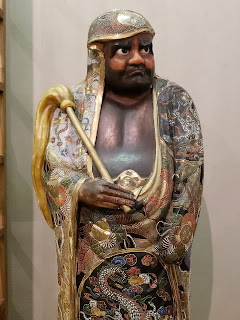The
first year I came to Moscow was the first time I'd ever had a fall
break. I never had one when I was in school, I never had one when I
taught in Korea, and I never had one while I taught in Ukraine. My
first year in Moscow I planned to go to Malta. Then I found out my
visa would still have been a single entry visa, they weren't going to
have finished the conversion to a multi entry visa in time for my
planned holiday out of the country. This made me change my plans, and
that first year I stayed in Russia for the break.
This
year I finally got to do what I wanted, go to Malta. It took two
flights to get there, with a long layover in the main airport of
Istanbul. Thankfully that's a good airport to be in if you need to
waste time.
I
landed at the main airport in Malta, but my journey was far from
over. From the airport I caught a bus to a ferry port, then took a
ferry to the next island over. Malta consists of two islands, and I
figured I should start by going out as far as I could, then working
my way back over the weeklong trip. After the ferry I had one more
bus, which took me to my first city: Victoria, on the island of Gozo.
Victoria
is the capital of the island of Gozo, and is centrally located on the
island. The city itself doesn't have too much to see or do, but it's
a great base. The population count of Victoria is just under 7000,
which tells you how small most everything is on Gozo. According to
Wikipedia locals call the city (or at least the city center,) Rabat,
as the name Victoria came from the colonizing British.
It was
easy to figure out where to go after getting off the bus, and
checking into my accomodation was easy enough.
I shouldn't have taken
a nap, but I was exhausted from traveling for so long, so I did. When
I went back out it was mid afternoon.
I
started by walking in the general direction of the citadel. The
modern city is built around the citadel, which is old. It might go as
far back as Neolithic times, but they know for sure it was fortified
during the Bronze Age. Pheonicians did their part, as did the Romans
when the island became part of that empire. The Aragonese, Knights of
St John, and the Ottomans joined the queue of people and empires who
had a part of history in Malta.
Entry
to the citadel itself is free, but there are a few places inside the
walls that have separate entry fees. I went in only one of them then,
it was more interesting to wander around, seeing how all the
buildings fit within the walls.
Standing
at the walls gave me the chance to look out over some of the
surrounding area. It wasn't stunning, but it was nice to see.
Victoria is essentially built on a hill, though not a big one.
Not
surprisingly, the place I visited in the citadel was a church. It
wasn't cheap, 6 euros!! I wanted to wait until the next day, but they
lady selling tickets said it would be closed the next day. Sigh.
This
cathedral was huge, with a beautiful ceiling. I walked all around the
areas I was allowed to be in, and sat down for a few moments to enjoy
the atmosphere.
Dinner
that night was a plate of scallops and chips in a cafe on one of the
central squares.
The
next day I was up early to get first dibs on the breakfast included
in my room price. Most of it was okay, but I was sorely disappointed
in the bacon, which had the consistency of rubber. I'm sure it is because the meat was being kept warm under a heat lamp, which is no friend of bacon. Sigh.
The
next two days I put together day trips of sights I could get to from
Victoria. The island of Gozo has a good system of public transport,
making it easy to see everything and not spend too much time waiting
for buses.
Another
sight I saw in Victoria itself was St. George's Cathedral. A huge
church on one side of the main square in the city. The first time I
walked by, the doors weren't open. During my entire time in Malta I
wasn't able to sort out whether churches are open only at specific
hours, all the time, or some other schedule.
St.
George's was big, and felt big. The ceiling was all painted, so I did
spend time just staring upward. The sides had more mini altars and
memorials, which were also colourful.
I
didn't spend much time in Victoria itself though I slept there every
night I was on the island. Yet I don't feel as though I missed much
of anything.


















































